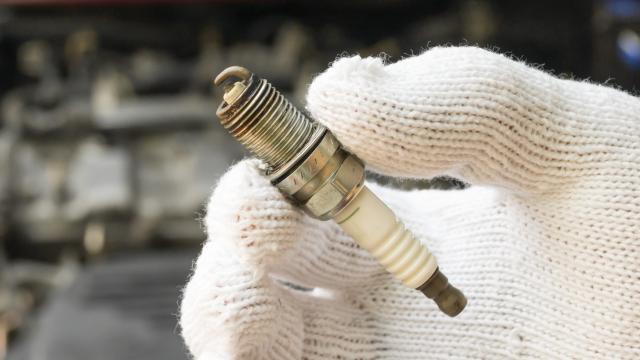When most drivers turn the key or press a button to start their vehicle, they’re probably not mentally going through everything that needs to happen in order for their engine to start. And while the process appears so simple to us today (especially when it’s literally the push of a button), there are so many things going on under the hood that all have to fall into place and function properly in order to allow you to hit the road.
Though small, spark plugs play an important role in getting your vehicle started and keeping it running — so when they’re past their prime, you’re going to want to replace them. Not sure if it’s time yet? Then you’ll need to test them. Here’s why it’s important and how to do that.
[referenced id=”578462″ url=”https://www.lifehacker.com.au/2014/03/shatter-a-car-window-with-a-sparkplug-in-an-emergency/” thumb=”https://www.gizmodo.com.au/wp-content/uploads/sites/4/1970/01/01/578462_ArUnuEUd4VU-300×169.jpg” title=”Shatter A Car Window With A Sparkplug In An Emergency” excerpt=”If you’re stuck in a sinking car, or outside your car and desperately need to get inside, you have plenty of ways to break that window, but one of the best might be right there in your car anyway — a simple sparkplug will do the trick with ease. This…”]
What do spark plugs do?
It’s probably a good idea to have a basic understanding of what spark plugs actually do. Here’s a quick explanation from Mike Cote at Auto Anything:
A spark plug is essentially an electrical gadget that fits into your engine’s cylinder head, where it “sparks” to ignite the fuel. The plug is connected to the ignition coil that generates the high voltage needed to spark the fuel and create combustion within your engine. No spark plug means no combustion, which means you won’t be going anywhere without one.
Why test a spark plug?
When your “check engine” light comes on — or you’re experiencing some other not-immediately-identifiable issue with your engine — there could be a variety of things wrong. But, as Hank O’Hop of The Drive explains, when you’re troubleshooting engine problems, it makes sense to start with the easiest and simplest solution, and work your way up to more complicated issues from there. And if you’re dealing with a misfire, the easiest place to start is with the spark plugs.
[referenced id=”1035827″ url=”https://www.lifehacker.com.au/2020/11/why-your-check-engine-light-is-on-2/” thumb=”https://www.gizmodo.com.au/wp-content/uploads/sites/4/2020/11/10/cjcvfqfqlsdnxjhzg8bw-300×169.jpg” title=”Why Your ‘Check Engine’ Light Is On” excerpt=”Driving a car is one of those things that works best when you don’t have to worry about how everything works. You have enough to pay attention to on the road without having to worry about what’s going on under the hood. But then one day you’re driving home, minding…”]
How to test a spark plug
Although this is something you can certainly leave up to the professionals, it’s also simple enough to do at home. In his article in The Drive, O’Hop walks us through two different ways to test a spark plug at home: a grounding test and a multimeter test. Here’s what you’ll need:
- Spark Plug Wire Puller (For older vehicles without coil packs)
- Multimeter (for resistance test)
- Spark Plug Socket
- Sockets (for cars with coil packs)
- A spark plug that’s known to work
We’ll let O’Hop take it from here, so visit his article on The Drive for the rest of the steps — including how to do everything as safely as possible.

Leave a Reply
You must be logged in to post a comment.